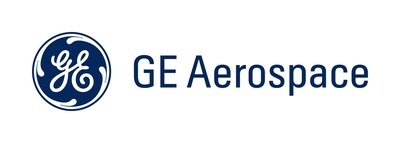GE Aerospace and NASA partnering on flight tests to accelerate industry's understanding of contrails
- Advances LiDAR technology for improved contrail analysis
- Provides insights for development of new aircraft engines
- Industry actively collaborating to understand contrail science with aim to reduce emissions
CINCINNATI, Nov. 15, 2024 /PRNewswire/ — GE Aerospace (NYSE: GE) and NASA are partnering on a series of unique flight tests to help further the aviation industry’s understanding of contrails, using new test methods and technologies.
Contrails are clouds made of ice particles, which can be created when airplanes fly through cold, humid air. Persistent contrails are estimated to have a warming climate impact. Flight tests will support industry research efforts to better understand contrail science and enable new technology development that can reduce non-CO2 emissions.
Flights for the Contrail Optical Depth Experiment (CODEX) will be conducted the week of November 18 from Virginia. NASA Langley Research Center’s G-III aircraft will follow GE Aerospace’s Flying Test Bed in the sky and scan the aircraft wake with Light Detection and Ranging (LiDAR) technology. This will advance the use of LiDAR by NASA to generate three-dimensional imaging of contrails to better characterize how contrails form and how they behave over time.
For GE Aerospace, this represents new operating methods for its 747 Flying Test Bed, expanding capabilities ahead of flight tests planned this decade to evaluate performance of new commercial engine technologies. Open Fan, advanced combustion designs, and other propulsion systems are being developed through CFM International’s Revolutionary Innovation for Sustainable Engines (RISE)* program.
“GE Aerospace is proud to once again team up with NASA to be at the forefront of innovation for the future of more sustainable flight,” said Arjan Hegeman, general manager of future of flight technology for GE Aerospace. “Understanding how contrails act in-flight with the latest detection technology is how we move innovation forward. These tests will provide critical insight to advance next generation aircraft engine technologies for a step change in efficiency and emissions.”
GE Aerospace and NASA have partnered for more than 50 years to accelerate the introduction of new innovations to the aviation industry.
“NASA is advancing the scientific understanding of contrails to improve our confidence in future operational contrail management decisions that consider overall climate impact and economic trades,” said Dr. Rich Wahls, manager of NASA’s Sustainable Flight National Partnership. “We are thrilled to once again work with our collaborator, GE Aerospace, on this first-of-its-kind flight experiment.”
Chief technology officers across the aviation industry called for more government research programs at the Farnborough International Airshow in July to enhance understanding of aviation non-CO2 effects, such as contrails, nitrogen oxides (NOx), sulfur, aerosols, and soot.
Weather prediction
NASA, German Aerospace Center (DLR), and SATAVIA will collaborate on atmospheric forecasting to identify conditions favorable for studying contrail formation.
DLR will help predict the altitude and dimensions of contrail forming regions and their evolution, required to guide the aircraft into fast-moving contrail regions. After the flight tests, the contrail model can be validated with LiDAR observations to advance contrail prediction capabilities.
Additionally, flight test learnings will help SATAVIA – which offers a contrail forecasting and management service – validate and improve its numerical weather prediction capability used to forecast contrail formation in ice super saturated regions (ISSR). Aerospace Carbon Solutions, a GE Aerospace business, acquired SATAVIA earlier this year.
CFM RISE program
Unveiled in 2021, the CFM RISE program is one of the aviation industry’s most comprehensive technology demonstration programs showing real progress with more than 250 tests completed.
Through the RISE program, CFM is advancing a suite of pioneering technologies, including advanced engine architectures like Open Fan, compact core, and hybrid electric systems to be compatible with 100% Sustainable Aviation Fuel (SAF). The CFM RISE program targets more than 20% better fuel efficiency with 20% lower CO2 emissions compared to the most efficient commercial engines in service today. Technologies are also being validated to meet the most stringent non-CO2 and noise emission requirements.
Innovation legacy
In addition to the upcoming contrails flight tests, GE Aerospace and NASA collaborations include hybrid electric engine development, new compact core compressor, combustor, and high-pressure turbine jet engine technologies, and fuels emissions testing.
GE Aerospace plans to hire more than 900 engineers in 2024, reflecting its continued focus on innovation to support current aircraft engine programs and develop new technologies for the future of flight. View job openings at invent.ge/engineering.
*RISE is a registered trademark of CFM International, a 50-50 joint company between GE Aerospace and Safran Aircraft Engines.
ABOUT GE AEROSPACE
GE Aerospace (NYSE: GE) is a global aerospace propulsion, services, and systems leader with an installed base of approximately 44,000 commercial and 26,000 military aircraft engines. With a global team of 52,000 employees building on more than a century of innovation and learning, GE Aerospace is committed to inventing the future of flight, lifting people up, and bringing them home safely. Learn more about how GE Aerospace and its partners are defining flight for today, tomorrow and the future at www.geaerospace.com.
![]() View original content to download multimedia:https://www.prnewswire.com/news-releases/ge-aerospace-and-nasa-partnering-on-flight-tests-to-accelerate-industrys-understanding-of-contrails-302307285.html
View original content to download multimedia:https://www.prnewswire.com/news-releases/ge-aerospace-and-nasa-partnering-on-flight-tests-to-accelerate-industrys-understanding-of-contrails-302307285.html
SOURCE GE Aerospace





 Private Internet Access gives you unparalleled access to thousands
of next-gen servers in over 83 countries and each US state. Your
VPN experience will always be fast, smooth, and reliable.
Private Internet Access gives you unparalleled access to thousands
of next-gen servers in over 83 countries and each US state. Your
VPN experience will always be fast, smooth, and reliable.